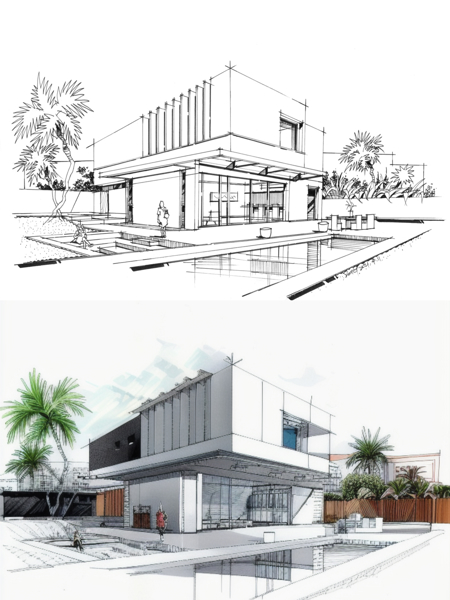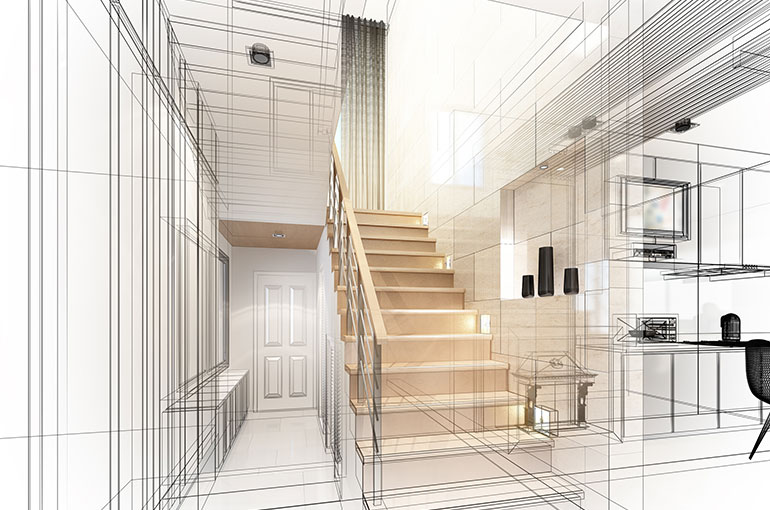Recognizing the Collaborative Process Between Architects and Engineers in Modern Construction Projects
The collective procedure in between architects and designers is important in contemporary construction tasks, as it harmonizes style intent with design feasibility. This partnership not just affects the visual and functional aspects of a job yet additionally plays an important duty in addressing sustainability challenges. By utilizing efficient interaction strategies and leveraging advanced innovations, such as Structure Details Modeling (BIM), groups can function more cohesively. However, the complexities of this partnership usually existing unique challenges that can hinder progress. Discovering these characteristics discloses understandings that can considerably impact project results and general market requirements. cda architects.
The Relevance of Cooperation
The collaborative synergy in between architects and engineers is essential for the successful awareness of any type of construction task. This partnership unites distinctive expertise and viewpoints, enabling the combination of ingenious style with sensible design options. By working together, designers and engineers can ensure that a job not only fulfills aesthetic and useful needs yet also complies with safety and security, sustainability, and financial restrictions.
Partnership fosters a shared vision, promoting the alignment of goals and expectations from the start. This alignment is important in resolving potential challenges and mitigating dangers that can occur throughout the task lifecycle. A collective technique permits for the reliable allotment of sources, maximizing both time and cost.
The significance of partnership reaches the iterative process of style and building and construction, where responses from engineers can inform building choices, leading to more possible and lasting styles. Alternatively, engineers can inspire engineers to think creatively regarding exactly how to achieve structural integrity without jeopardizing artistic intent. Eventually, the collective connection in between designers and designers is not simply helpful; it is basic to the production of top quality, functional, and innovative built environments that meet the demands of culture.
Interaction Methods and Tools
Efficient communication techniques and tools are vital for fostering cooperation in between designers and engineers throughout the project lifecycle. Establishing clear networks of interaction is necessary to make sure that all team participants are lined up with job purposes, timelines, and obligations. Regular meetings, both in-person and digital, give chances for stakeholders to talk about progress, address concerns, and make educated decisions.

Furthermore, embracing collaborative communication devices, such as Slack or Microsoft Teams, enables immediate messaging, documents sharing, and ongoing conversations, advertising a more active response to arising problems. File administration systems also play an essential role in arranging project paperwork, making certain that all staff member have accessibility to the current info.
Shared Objectives and Project Vision
A combined job vision works as the foundation for successful partnership between engineers and designers (cda architects). This common vision not only straightens the efforts of both parties however likewise develops an usual structure for decision-making throughout the task's lifecycle. By articulating clear goals, stakeholders can efficiently navigate the complexities of modern building and construction projects, guaranteeing that both aesthetic and useful needs are fulfilled
Developing common objectives includes open discussion and a complete understanding of each discipline's payments. Designers normally concentrate on design intent, spatial relationships, and individual experience, while engineers emphasize architectural stability, systems performance, and compliance have a peek at these guys with laws. When these viewpoints are lined up, the result is a natural task that complies with both imaginative desires and technical expediency.
Moreover, a distinct project vision promotes responsibility among employee, urging each participant to take possession of their function in attaining the desired outcome. Routine check-ins and collective workshops can further reinforce this commitment, permitting adjustments to be made as the task develops. Inevitably, a common vision not only improves team effort yet also elevates the top quality of the final deliverable, causing successful job conclusion.
The Role of Modern Technology
Leveraging modern technology has actually become necessary in boosting cooperation in between engineers and engineers. The assimilation of sophisticated software tools facilitates real-time interaction and information sharing, enabling groups to function more effectively and successfully. Structure Information Modeling (BIM) sticks out as a pivotal modern technology, permitting both architects and designers to produce thorough 3D versions that envelop layout intent and structural stability. This common aesthetic representation reduces misconceptions and simplifies the decision-making procedure.
Moreover, cloud-based systems enable seamless partnership, permitting project stakeholders to access and update task data from anywhere. This cultivates a society of openness and accountability, as adjustments can be tracked and reviewed in real-time. Furthermore, mobile applications more boost communication, providing on-site teams with immediate access to project specifications and updates.
Emerging technologies such as synthetic intelligence and artificial intelligence are additionally starting to contribute in predictive evaluation, assisting teams determine possible problems prior to they develop. Eventually, the duty of technology in architecture-engineering cooperation not only boosts process effectiveness however also improves technology, causing even more successful job end results. By accepting these technical advancements, designers and designers can ensure a much more cohesive and efficient collective procedure throughout the building lifecycle.
Instance Studies in Successful Partnerships
Many situation researches illustrate the profound impact of efficient partnerships between designers and engineers on task end results. One notable instance is the cooperation on the High Line in New York City City, where landscape architects, link engineers, and metropolitan organizers interacted to change a deserted railway right into a lively public park. This multidisciplinary technique not just improved the aesthetic quality but likewise made certain structural safety and security and ecological sustainability.

The Burj Khalifa in Dubai even more shows the value of collaborative initiatives - cda architects. The combination of design and design expertise enabled the project group to article source accomplish extraordinary elevations while adhering to security guidelines and aesthetic vision
These instances underscore the importance of interaction, depend on, and shared purposes. In today's complicated construction setting, such partnerships are important to navigating challenges and providing projects that meet both practical and visionary objectives.
Conclusion
In conclusion, the collaboration between architects and engineers is important for the success of contemporary building projects. Effective communication techniques, a shared project vision, and the integration of sophisticated innovations are important parts that facilitate this collaboration.